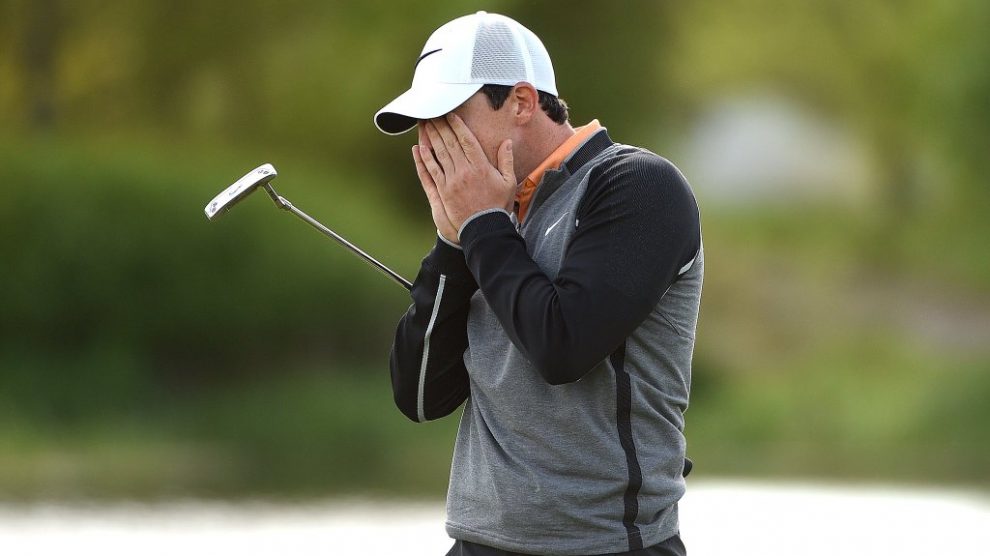During the 2017 Travelers Championship, Rory McIlroy was making waves -- not for what he was doing right, but for what he was doing wrong.
He changed three putters over the four days of this one event. Rory felt he “just wanted to mix it up and go back to something that looked a little more familiar." Changing the putter is probably the easiest option in the middle of a tournament. However, while a particular putter may feel comfortable and often help a golfer perform well (if only from the very important mental perspective), it will not always work.
Asked what had gone awry, McIlroy said it was not the putter to blame but rather what he was doing with it. When a golfer of Rory’s caliber implies that it was his stroke that was to blame, a change of putter really cannot help. After all, something we all have in common: From rank beginner to someone of Rory’s amazing abilities, we can always tell when a putting stroke feels “off."
So the next thing McIlroy would be sure to look at is his putting stroke. Should the putter be moving on an arc or straight back and through? Also, should the movement be initiated by a “rock the shoulders” effort that will use the big muscles? So many stroke options; none of them particularly scientific.
The main purpose of the stroke is often forgotten in the pursuit of a specific style.
Both swinging on an arc and rocking the shoulders reduce a putt’s margin for error - the putter barely remains along a straight path past the ball before it moves horizontally (swing-arc) or vertically (shoulder-rock) off the ball. Would one ever tell a pool or billiard player to move the cue on an arc or while rocking the body?
As for the straight back-and-through movement, while it is a better concept, it does not really work because when the arms move during the backstroke, the golfer’s torso moves too (same muscle groups connect them all) so that there is an inevitable slight arc of the putter head than cannot be helped. What can and must be done is for the putter head to move straight past the ball during the forward movement, if only for an infinitesimal amount of time.
The most important perspective from which to view ball-striking issues is from the anatomical one - from understanding what the human body’s design will and will not permit. Ever wondered why a horse kicks backward and a human kicks best in the forward direction? It’s simply in the design of our body’s joints!
A look at Rory’s recent putting set-up and stroke shows two aspects of concern. First, during his set-up, his elbows fall on either side of his body so that they have limited range of motion and cannot comfortably move back and past the ball. This is fine if he were to use a “rock the shoulder” movement, but, just like a pendulum, that stroke only bottoms out at a particular spot, where his ball might not be! In order to create a slightly flatter arc for the putter, which would give his stroke a greater margin of error, an arms-back-arms-through movement is more reliable. To make such a movement, the arms should be slightly forward of where Rory places them. A line connecting the two elbows should be in front of a line connecting the two hips.
The second aspect requires an understanding of several sciences to appreciate.
When the shoulders are square at address, regardless of what type of stroke a golfer makes, the trail upper arm will be “internally rotated” by the end of the backswing, and so, as the arms move forward, the body and the lead arm come off the target line and move “inside”, presenting an ever changing club face direction to the ball. How then can the putter, even instantaneously, travel squarely along the target line past impact, to make the ball start straight? What should Rory do to prevent the inevitable internal rotation of his right shoulder at the end of his putting backswing? Position his body to avoid it.
Did you know even the human brain has a certain part of it (the basal ganglia) that positions the trunk in order to facilitate movements of the limbs? Rory would do well to have a lesson that slightly adjusts his elbows and trunk’s positions at address to produce a swing which does not have him move the ball this way. Such a lesson would also help him make great strokes no matter which putter he ends up using.
Kiran Kanwar teaches golf swing mechanics and is a full-time doctoral student studying human movement and researching the golf swing, in the hope of unraveling, with irrefutable science, the many mysteries surrounding it.

